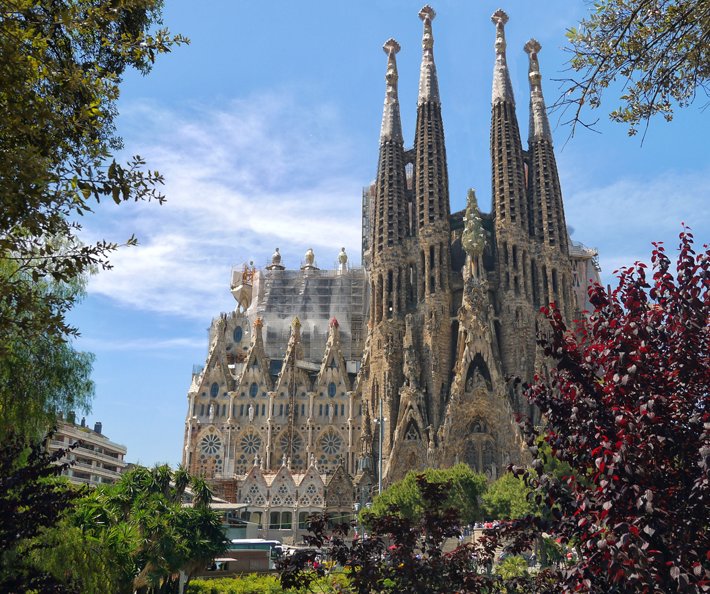
As tourism rebounds to pre-pandemic levels, Europe’s renowned churches are finding themselves inundated with sightseers, creating challenges in balancing the needs of worship and tourism.
In Barcelona and throughout southern Europe, famous religious sites are facing difficulties in accommodating the devoted worshipers who come to pray and the millions of tourists whose admission fees to admire the art and architecture help fund their operation.
As reported by Giovanna Dell’orto in a July 19 Associated Press article about the crush of worshippers and tourists, religious institutions are taking proactive measures “so that we don’t get to a collapse,” says Rev. Josep Maria Turull, rector at Sagrada Familia and director for tourism, pilgrimage, and sanctuaries within the Barcelona archdiocese.
One common solution to the problem involves segregating visitors and worshipers, with services taking place in separate areas, restricting visits during worship times, or implementing entirely different entry queues.
This spring, for example, the Vatican introduced a distinct “pathway” that begins outside St. Peter’s Basilica in Vatican City, specifically for individuals wishing to enter for prayer or attend Mass. The measure was taken to prevent the faithful from being discouraged by the often lengthy queues of as many as 55,000 daily visitors, according to Roberta Leone, spokesperson for the Basilica.
Nonetheless, the challenge persists: finding a balance between the competing roles of churches amidst the surge in tourism while preserving their essential spiritual purpose.
Allowing worshipers to engage with and understand their faith while jostling with tourists is “just really hard,” said Daniel Olsen, the head of the geography department and an expert in religious tourism research at Brigham Young University in Provo, Utah.
With approximately 330 million people visiting religious sites worldwide each year, religious tourism represents one of the largest segments in tourism.
Worshipers, drawn to celebrated churches because of the abundance of services they offer compared to regular parishes, require unrestricted access, while tourists often contribute essential fees that support the maintenance of these sites.
_______________
From its beginnings, the Church of Scientology has recognized that freedom of religion is a fundamental human right. In a world where conflicts are often traceable to intolerance of others’ religious beliefs and practices, the Church has, for more than 50 years, made the preservation of religious liberty an overriding concern.
The Church publishes this blog to help create a better understanding of the freedom of religion and belief and provide news on religious freedom and issues affecting this freedom around the world.
The Founder of the Scientology religion is L. Ron Hubbard and Mr. David Miscavige is the religion’s ecclesiastical leader.
For more information, visit the Scientology website or Scientology Network.
DOWNLOAD THE WHITEPAPER

